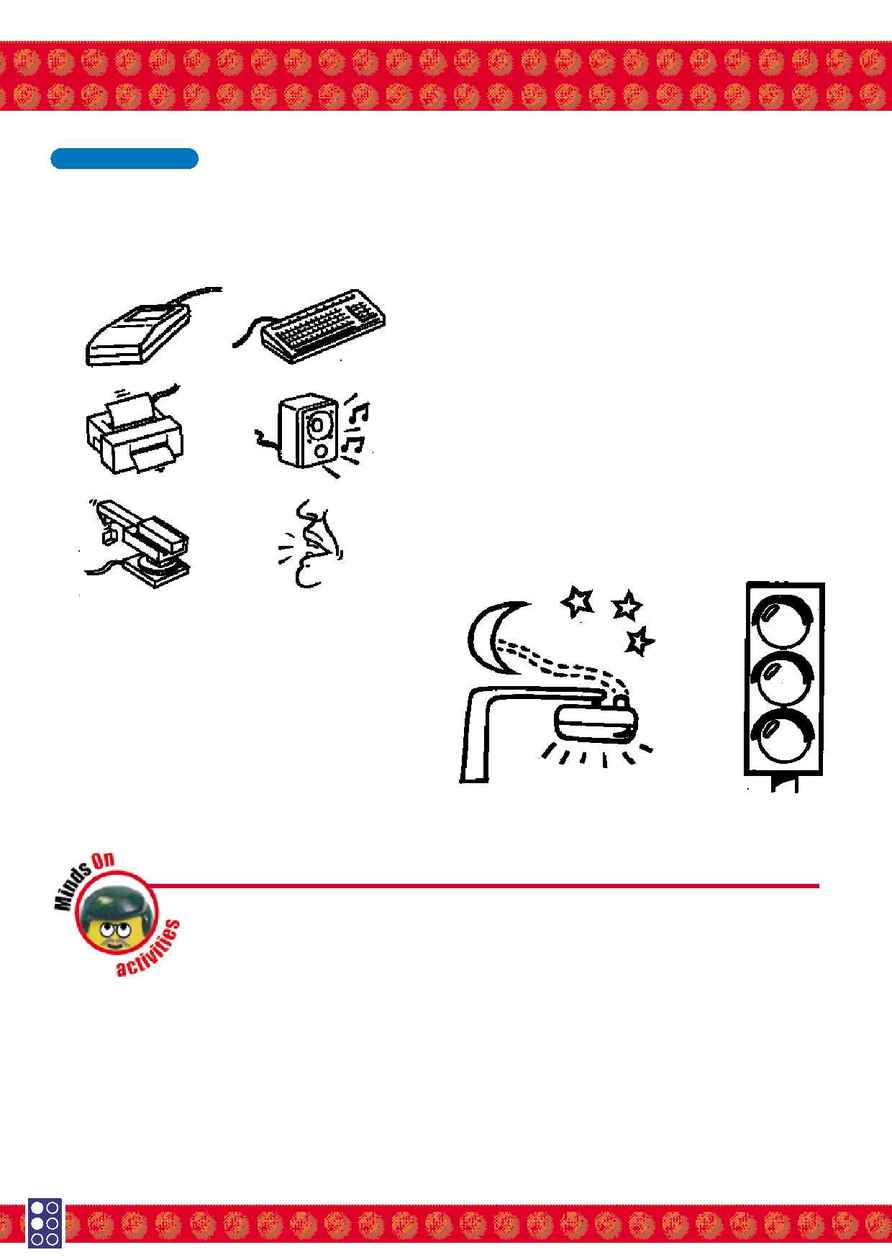
Workshop Programme Teachers' Notes
Robosports
Computers cont...
Information provided to the computer
program is called input. Input can arrive via
various sources such as a keyboard, a mouse,
a barcode reader or a voice.
Once the computer has been told to do its
task it must then show us the result, which
is called output. This can occur in a number
of ways: on screen, on a printout, by sound
or by causing something to operate.
The real benefit of using computers appears
when:
·
the same action has to be performed
several times
·
you have to handle large amounts of
information.
Computer control falls into two broad
categories:
·
Sequenced computer control a series
of commands is stored and repeated.
Typically used for such things as
traffic lights, rotating advertising
boards, and production equipment.
·
Feedback control the computer
reacts to input from a sensory device.
For example the windows in a modern
greenhouse will open when the
temperature reaches a certain level;
street lamps will switch on when it gets
dark; the burglar alarm will start when
there is a movement in the room... and
so on.
INPU
T F
RO
M A SENS
OR
S
T
O
R
E
A
N
D
R
E
P
E
A
T
S
T
O
R
E
A
N
D
R
E
P
E
A
T
Activities before the visit
·
Show your pupils the map of LEGOLAND Windsor. Discuss their expectations of the
visit and any concerns, e.g. what to do if they are separated from the group or they
feel unwell during the day.
·
Talk about the activities that will take place.
·
Introduce the pupils to the concept of computer control.
·
Talk to them about:
what they think computer control means
what computer-controlled things they are familiar with
which kinds of control they are familiar with (sequenced and feedback control)
which kind of computer control they will encounter during their visit to LEGOLAND
Windsor (see worksheets).
